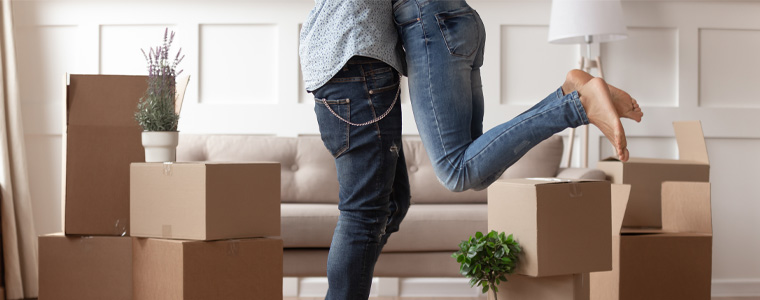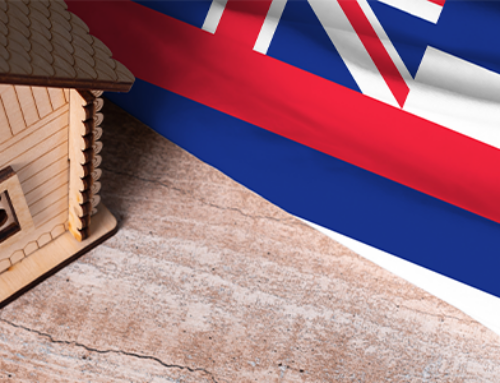Whether you’re prepping your home for a move across the island or across the ocean, how you pack everything matters. Take it from Frank Valenti, our Safety and Technical Training Manager, who trains our moving crews on everything from how to wrap a chair in the shortest amount of time with the fewest errors to how to move our customers’ items with the same level of care they’d offer their tutus. (That’s “grandparents” for those of you on the mainland!)
So who better to offer you these six packing tips than the expert we trust to train our pros? We recently spoke with Frank, who’s moving his own family in the next few weeks, and he offered us the following pointers. Follow Frank’s advice and you’ll discover how to 1) protect your possessions for a move of any distance, 2) safeguard your own health and safety during your move, and 3) reduce your stress around this huge life event.
Tip #1: Take Your Time and Pack It Right
Even though it’s tempting—especially if you’re short on time—don’t rush the packing process. Good packing prevents damage, especially if your items are going in a container for ocean transit. In our experience, how an item gets packed directly impacts whether it gets broken or damaged during shipment.
This is especially true for your high-value items. If an expensive Tempurpedic mattress, for example, sits in a container for 3-4 weeks on its side without support, it’s going to end up damaged.
The same goes for other items that require special handling. When it comes to things like musical instruments, fine art, and other delicate items, you might consider having them individually crated for maximum protection.
The bottom line is this: If you have items that mean a lot to you, take the time to make sure they get packaged correctly, whether you do it yourself or call in the pros.
Tip #2: Don’t Mix Rooms within Your Boxes
If you’re packing up your spare bedroom and you have some extra space in a box, it’s tempting to do something like grab a few couch pillows from the living room and stuff them into the same box. I’d recommend against that. First of all, it will make your unpacking process more chaotic. Moving is already stressful, one of the most stressful life events a person can go through. In fact, I often remind my team of this study that some people would rather spend a week in jail than move. So why make it more complicated on the other end?
The other thing you want to consider is that you might not be able to unpack everything at once. If you’ve mixed up things from different rooms in different boxes, you’re going to find yourself opening every box in the house just to find some little thing that you desperately need. So, as much as you can, keep your boxes organized by room, and label them well. It will make your unpacking process much simpler.
Tip #3: Think About the Person Unpacking at the Other End
This is a concept we teach our crews from the start since the guys who pack you up on Oahu are probably not the same guys who will unpack you on Kauai. This is probably true for many families, too: Sometimes a husband will pack a box the wife is going to unpack, and you want to consider the safety of the person at the other end, even if that person is you.
This becomes especially important with sharp objects, like knives and blender blades. Imagine a scenario where you’re in the middle of unpacking your kitchen, you stick your hand into the box and you cut yourself on the sharp blade of a blender that wasn’t packed properly. Not good.
So when you pack sharp objects, think about the person at the other end who’s going to be unpacking. Pack them so if someone reaches in blindly, they won’t accidentally get cut. For a blender blade, you might want to wrap it in paper, then put it inside the blender container, then wrap that in paper. That way, if someone else in your family is unwrapping it—or even if it’s just you, two weeks later—you know that person will be safe.
Tip #4: Aim for Density When Packing
We’re always thinking about ways that we can pack for maximum density. For those of you who aren’t in the moving industry, think of it like this: You want to make maximum use of the space you have. So, for example, when it comes to chairs, we might think about stacking them seat to seat, then putting a small box in each leg space.
That’s how our crews think when they’re doing a door-to-door move. As they’re packing your belongings, they’re always looking for ways to achieve maximum density to protect your belongings and keep costs down for all parties involved.
If you’re using our EZ Move Program where you pack your own lift van, or you’re renting a truck, you’ll also want to adopt this mindset. In those scenarios, you want to fit as much as possible into the space you have. Additionally, items that are packed in tightly are less likely to shift during their trip, so aiming for density provides your items some extra protection during their journey.
Tip #5: Unpack Slowly and Carefully
You wouldn’t believe how many times little things get trapped in packing paper and nearly get thrown out. We’ve found all sorts of items in paper that’s headed for the recycling bin—toys, little souvenirs, even service ribbons.
So when you’re unpacking, unwrap absolutely every piece of paper or packing material. Take your time. Flatten absolutely everything out. I think you’ll be surprised by what almost went missing. And even though it might just be some little souvenir you picked up somewhere, it probably represents something important to you—a happy memory. You went to the trouble of packing it and taking it with you, so take that extra time to make sure it doesn’t accidentally get tossed.
Tip #6: Know When to Bring in the Experts
If you have to move in a hurry, think about bringing in the experts. A door-to-door move is a great option if you’re pressed for time. Our crew will come in with all the materials they need, and they’ll pack up your entire home, then they’ll unpack you at your final destination. We train our guys hard to be careful but efficient, and we can save you a ton of time and stress.
We know moving is stressful. I emphasize to our teams all the time that they may think they’re driving around with 6,000 pounds of household goods, but they’re really not. They’re driving around with someone’s whole life on the back of their truck. And we treat it that way.
Finally, if you have a complex or valuable item, you may want to consider expert help. For example, my wife has a piano that I’ll need to move in the next couple of weeks. But it’s not a piano. It’s an emotional piece for my wife that’s tied into things like how she’s going to teach our kids to play the piano. So if it gets scratched or broken, I’m in big trouble. You can bet I’m calling in the experts to have it moved.
Your DIY Move Made Safer—and Less Stressful
There’s no question: Packing up your entire life and moving it to a new location is one of the most stressful life events you’ll encounter. However, with these six tips, you’ll be one step closer to creating a safer, less hectic move, one that ensures all your possessions arrive successfully at your new home.
_____
And if you decide not to go the DIY route, we’re here for you. Whether you want a door-to-door solution where we handle absolutely everything or you want to investigate other options, like our EZ Move program for interisland moves, it all starts with a free quote for your move. Get in touch with us today. We’d be happy to help you with a safe, easy and affordable move.
Tell us about your move!



